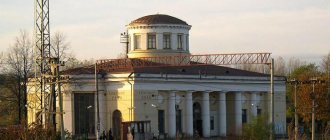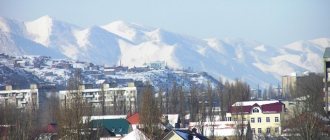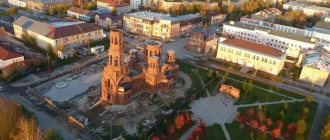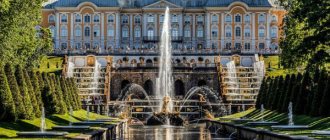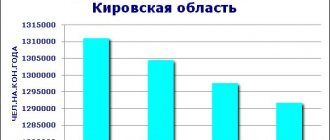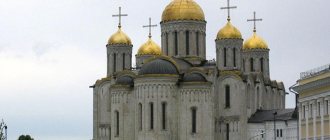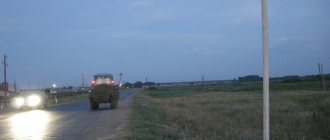The Voronezh region is geographically located in the central zone of Russia. A satellite map of the Voronezh region clearly demonstrates that the city occupies an advantageous location in terms of transport routes.
The map helps you find any object on the territory. It displays the geographical location of settlements and their actual areas.
With its help, you can’t get lost in the numerous city streets.
The map of the Voronezh region shows that the region is located in the upper reaches of the Don River. Several large rivers flow through the region. This region is especially popular among fishermen. There are many ponds and reservoirs with fish.
The region is distinguished by the richest black soils and large industrial enterprises.
The largest cities in the Voronezh region
List of the largest cities in the region by population.
Voronezh
The city on the river of the same name has existed for more than four centuries. Many important historical events took place here at different times. An exact copy of the sailing ship in which the museum is opened preserves the memory of the Peter the Great era. In memory of the occupation and heroic battles in the Great Patriotic War, many monuments have been erected in Voronezh; the city bears the title of City of Military Glory. It was heavily damaged in the battles, but rebuilt.
Population – 1,058,261 people (2020).
Rossosh
The city is small, located 200 km south of Voronezh, on the Chernaya Kalitva River. The area around is untouched dense forests inhabited by wild animals. Interesting architectural objects: the station building and the Alexander Nevsky Temple of the 19th century. There are several theater groups in the city, and large-scale creative competitions are held. The rich exposition of the local history museum is of interest.
Population – 62 thousand people.
Borisoglebsk
The city is located 200 km east of Voronezh, at the confluence of the Vorona River and Khoper. Here you can enjoy ancient architecture: merchant estates, houses, trading shops. The oldest church is the Assumption Church, dating back to the 18th century. The local drama theater is also located in a historical building. There is an interesting art gallery, the house where Maxim Gorky lived, as well as a flight school where V.P. Chkalov studied.
Population – 61 thousand people.
Liski
The settlement received its development thanks to the construction of a large railway station; many trains pass here and there is brisk trade at the station market. There are two sanatoriums with sources of healing mineral water. In the city park you can ride on the children's railway. 10 km from Liski there is the Divnogorye Museum-Reserve; all guests of the city must visit it.
Population – 53 thousand people.
Ostrogozhsk
The ancient city is located 100 km south of the regional center. The ancient architecture is of interest to visit: merchant houses of the 19th century, Church of the Transfiguration of the 18th-19th centuries. In the center of the city, a stone erected at the meeting place of Peter I and Mazepa has been preserved. The rich art gallery named after Kramskoy stores works not only by the famous countryman, but also by Aivazovsky, Repin, Polenov, Kuindzhi.
Population – 32 thousand people.
Novovoronezh
One of the youngest cities in the region, it was founded in 1952 in connection with the construction of the Novovoronezh Nuclear Power Plant. Located on the banks of the Don River, the regional center is only 38 km from here. The city is well developed: there is a cultural park with attractions, a sports complex with a swimming pool, and a cinema. In the surrounding area there is a recreation center with its own fishery where you can fish.
Population – 31 thousand people.
Buturlinovka
The small town is located 180 km from Voronezh, on the Osered River. It has a rich history; many objects from the 19th and early 20th centuries have been preserved: temples, estates. A military airfield is located 4 km from the city; at the entrance there is a monument to the MiG-21 aircraft, and in Buturlinovka itself - to the Su-25 aircraft.
Population – 30 thousand people.
Semiluki
Along the right bank of the Don lies a small town, divided into two parts by the Devitsa River. The settlement arose here during the construction of the railway at the beginning of the 20th century, but people settled in these places for a very long time. This is evidenced by the archaeological monument of the Semilukskoe settlement in the city park. In summer there are beautiful places for recreation and fishing, and in winter there is a ski and tubing slope.
Urban and rural: different fates of Voronezh suburbs
Voronezh. 03/04/2020. ABIREG.RU – Analytics – The administrative-territorial division of the Voronezh region is full of paradoxes. The former village of Krasnolesny, located 50 km from Voronezh, is part of the city, while the villages of Yamnoye and Otradnoye, which have practically merged with the city, are part of the neighboring municipal districts. Residents of apartment high-rises who commute to work in Voronezh every day are considered rural residents. “Abireg” tried to figure out how these and other facts of administrative-territorial division affect the development of the suburbs and their residents.
Yamnoye and Otradnoye are the first to leave
The annexation of the nearby villages of Shilovo, Somovo, Pridonskaya and a number of others to the city in 2011 allowed Voronezh to become a million-plus city. This fact, of course, had a positive impact on socio-economic development, moving the capital of the Black Earth Region to the “major league” of Russian cities. The former suburbs, having entered the city limits, became more attractive, “pulling” the surrounding areas with them. However, urban development is a largely spontaneous process, and often does not obey administrative-command methods. Villages and towns such as Yamnoye, Otradnoye, Aleksandrovka, Novopodkletnoye, Chertovitskoye, Babyakovo and some others have actually become the same remote corners of the regional center as Shilovo or Pridonskaya. The regional centers of Novaya Usman and Semiluki are also increasingly acquiring the characteristics of suburbs. A significant part of their residents work in the regional center, and vacancies in local organizations, in turn, are filled by Voronezh residents.
“Abireg” has long been raising the topic of the development of suburban settlements. Back in September 2022, readers, answering the question “Which territories should be included in the city limits of Voronezh?”, chose Yamnoye (23% of respondents). Otradnoye came in second place with 16% of the votes. What is the current situation in suburban villages?
“On the territory of the Yamensky rural settlement, private companies are carrying out intensive housing development. At the same time, industrial enterprises are not developing here, and yet they, as you know, are the main taxpayers. Under these conditions, it turns out that local governments, having obligations to provide the growing Yamen settlement with the necessary social and engineering infrastructure, invest significant budget funds in this, but do not receive additional tax revenues to the budget. This imbalance negatively affects the development of 15 other settlements in the district, violating the principle of integrated development of rural areas. In addition, we are one of the few self-sufficient municipal districts in the Voronezh region, so the level of co-financing for most program activities is the highest in the region - 32.1%. And in a number of areas it is tenths of a percent. The difference is colossal. For every three million from higher budgets, we must contribute one million from the municipal budget,” explains the head of the Ramonsky district, Nikolai Frolov.
The Voronezh authorities did not follow the example of the capital, which annexed almost half of the Moscow region, choosing the “Compact City” concept of spatial development. From its name it is clear that it implies the preservation of the existing administrative boundaries of the urban district. At the same time, the regional “Strategy 2035”, adopted just over a year ago, declares the priority of the balanced development of the Voronezh agglomeration and the development of intermunicipal interaction.
Two years ago, the inclusion of part of Otradny and some other suburban territories into Voronezh was considered an almost resolved issue, but after another year the situation completely changed. From the official response to Abirega’s editorial request it clearly follows that no changes to the borders of Voronezh with adjacent municipalities are planned. However, regional authorities still do not rule out some changes in the status of suburban settlements in the long term. For example, the issue of granting Otradnoye the status of a separate municipal entity is being considered (now Otradnoye and Aleksandrovka are one rural settlement). The regional department of architecture and urban planning reminds that all issues of changing the boundaries of municipalities are regulated by Federal Law No. 131 and cannot be resolved without taking into account the opinion of the local population, expressed through representative bodies, that is, deputies of municipal councils.
Head of the Department of Economics and Management of Organizations at Voronezh State University Yuri Treshchevsky notes that Novaya Usman, Ramon, Semiluki have long been part of the Voronezh agglomeration. But the inclusion of certain territories of the above-mentioned districts within the city carries a number of risks.
“How rational is it to leave them as separate territories? From an administrative perspective, this makes sense. Still <...> some kind of power close to the population, somehow controlled by people. If you include them in Voronezh, there is a risk that for the city authorities it will be a distant, poorly controlled periphery. In addition, people are rightfully afraid of losing rural benefits: their payments for housing and communal services and land tax will increase,” says Yuri Treshchevsky.
The expert notes that in any case, serious infrastructure facilities are not built at the expense of local budgets. Maximum landscaping of yards and similar things. The village of Podgornoye, neighboring Yamny, already became part of Voronezh in 2007 as an urban microdistrict. And no breakthrough in infrastructure terms has occurred in this regard. The problem of electricity shortage, which is also typical for the neighboring Ramonsky district, remains; local roads leave much to be desired.
Donor municipalities lose out
It would seem that the Ramonsky and Novousmansky districts, which have merged with Voronezh to the greatest extent, should experience generally similar problems. But that's not true. Indeed, Ramonsky district is one of the few donor municipalities in the Voronezh region (along with Novovoronezh, Liskinsky and Rossoshansky districts). Therefore, the district has been assigned a much higher level of co-financing for the construction of social facilities within the framework of state programs. The Novousmansky district, despite the revival in local industry, continues to remain subsidized. The IP Perspektiva is located on its territory, and the SEZ Center will soon begin operating. However, due to the preferential investment regime, revenues from residents of industrial sites will not go to the municipal budget any time soon. Therefore, the Novousmansky district, like most others, enjoys an almost symbolic co-financing coefficient.
In the Novousmansky district, the problem of lack of places in kindergartens and schools has been practically solved. At the same time, the local head notes that the maintenance of social facilities falls on the shoulders of the municipality, and here the region is helped out by the policy of the regional authorities to equalize the capabilities of local budgets.
“These breakthrough projects became possible due to the fact that the Voronezh region and Novousmansky district were included in federal target programs, in particular to stimulate housing construction. Social facilities are built through co-financing from federal, regional and municipal budgets. The lion's share there is made up of funds from the federal and regional budgets; our share is negligible. For the municipality, the proposed conditions are very beneficial,” says the head of the Novousmansky district, Dmitry Maslov.
Local authorities set the goal of making the Novousmansky district subsidy-free over the next 5-7 years. But (taking into account the example of Ramona's neighbors), doubt creeps in: is the regional policy of equalizing municipal budgets discouraging local authorities? Doesn't this lead to the fact that it is not profitable for municipalities to be donors, but it is profitable to continue to be subsidized, solving 99% of their problems through subsidies from higher budgets? When distributing subsidies, many factors are taken into account, in particular, population growth and social burden on the local budget. However, the example of Yamny shows that subsidies from the region do not always keep up with real needs. The housing completion rate is not taken into account as a factor in the distribution of subsidies. But due to the avalanche-like growth of residential development and the growing load on infrastructure, the municipality will soon be unable to resolve basic issues of local importance. Perhaps, for the purpose of integrated development of rural areas, which authorities at all levels have been tirelessly talking about lately, it would be worth taking this factor into account?
Developers will determine the development of suburbs
Multi-apartment housing in the Novousmansky district is being built by local construction companies, DSK, Instep. Despite some friction (in particular, in 2022, the population did not support the initiative of developers to transfer part of the territories of rural settlements within the boundaries of Voronezh), local authorities managed to reach a compromise and determine the level of necessary investment in infrastructure from business.
“Development companies take an active position in terms of producing design documentation for social facilities, which is an entrance ticket to federal programs for the construction of kindergartens, schools, clinics, and sports infrastructure. We also interact on tactical current issues, in terms of road construction, territory cleaning, and we also work with management companies affiliated with developers,” said the head of the Novousmansky district, Dmitry Maslov.
The situation is completely different among Ramona's neighbors. The main developer building apartment buildings in the Ramonsky district is registered in St. Petersburg. She is building a low-rise residential complex “Rozhdestvensky” on the territory of the Yamensky settlement. The general director of the company, Larisa Soboleva, explained that Vit-Stroy does not plan any new projects, besides Rozhdestvensky, in the Voronezh region, so it makes no sense to discuss possible options for cooperation with local authorities in the future. At the same time, the manager emphasizes that the company of St. Petersburg businessman Vitaly Polshchikov is fulfilling all the obligations it initially assumed. The developer is positioning Rozhdestvensky as a residential neighborhood. “What microdistrict, is it really a village?” – I would like to ask the developer. “New traditions of city life,” says the advertising slogan of the Rozhdestvensky residential complex. That is, the company does not hide that the main target audience of such an offer is residents of Voronezh. This very interesting low-rise development project undoubtedly has the right to life, but I wonder whether the conditions for the harmonious development of the settlement were initially laid down in it and how much does the out-of-town developer understand the needs of the municipality in whose territory it works?
Let us note that large Voronezh developers also have plans to build multi-apartment housing in the Ramonsky district. What stands out against this background is the project of the satellite city of Solnechny with its constituent Technopolis on 150 hectares on both sides of the M-4 highway in the area of the Grad shopping center. According to the press service of the Hamina Group of Companies, work on the construction of Technopolis is planned to begin in 2022. Less than a year ago, developer Evgeny Khamin already reminded of the advisability of transferring land at the exit from Voronezh in the Moscow direction to the city limits. At the same time, the businessman noted that the city authorities should be the most interested in annexing part of the territory of the Ramonsky district.
“Residents of new microdistricts and cottage villages do not feel like residents of the Ramonsky district. The vast majority of them work in Voronezh and come to Yamnoye only to spend the night or relax; many of them are even registered in the city. Mentally they are city dwellers. They are not interested in the life of the region, they practically never visit the regional center, they have no roots here,” Ramonsky head Nikolai Frolov confirms Evgeniy Khamin’s theses.
The prefect notes that due to its natural attractiveness and close location to a city of over a million people, with an officially registered population of 36 thousand people, the Ramonsky district actually has several times more residents, especially in the summer. And this significantly increases the load on the district’s infrastructure and the volume of household waste, leading to additional costs from local budgets. At the same time, the current methodology for calculating the amount of funding for municipalities is based on the size of the officially registered population.
However, the status of a rural resident also provides certain advantages. It was this factor, apparently, that became decisive in deciding the fate of the territories of the Novousmansky district adjacent to Voronezh.
“I am against transferring these territories to the city district. And the governor’s position is to do this based on the will of citizens. We conducted such surveys through electronic voting and found that the majority of the population is against entering the city limits,” says the head of the Novousmansky district. At the same time, Dmitry Maslov clarifies that most of the new residential complexes are still under construction, and in five years, when they are occupied, the results of a similar vote may differ radically. In the meantime, the majority are residents of the “old” Otradny, who consider themselves more of a rural population. Novousman authorities confirm that they are currently considering several applications for the construction of new quarters. Recently, the activity of developers in the municipality has increased significantly.
As for the rural status of Novaya Usman itself, whose population is approaching 40 thousand, the head believes that paradise is up to the rank of a city in some respects. Nevertheless, everyone understands that over time this issue will still have to be considered. The head of the district notes that the presence of two municipalities in one locality contradicts the Federal Law “On Local Self-Government”. Therefore, now the district authorities are faced with the issue of merging the First and Second Novousmansky rural settlements. Only after this will it be possible to consider the issue of granting city status to the regional center, again taking into account the opinions of local residents. This is a question for the next 3-5 years, the head believes.
Will agglomeration save the suburbs?
What does regional power mean by the development of agglomeration? The regional department of construction and architecture explained that in the future it is planned to ensure coordination of the plans of the city and municipalities that are part of the agglomeration on the implementation of investment projects, housing construction, social and other infrastructure. Federal Law 131 opens up wide opportunities for this, providing for the possibility of creating intermunicipal associations and other organizations, concluding various contracts and agreements. The department also notes that the development of the draft Federal Law “On Urban Agglomerations”, which determines the legal status of these entities, has recently been completed. In accordance with it, to consolidate the concept of “Voronezh agglomeration”, the adoption of an appropriate regional law will be required, which will determine the status of the agglomeration, the procedure for intermunicipal cooperation, management of the agglomeration and its inclusion in the federal register.
“When planning the strategy for the socio-economic development of the Voronezh region until 2035, it was taken into account that agglomeration is one of its attributes. It is not formed administratively. But administrative actions will be needed that accompany the formation of an agglomeration. It arises due to the fact that both the population and business take advantage of the advantages of suburban areas. 30-40 km from the city center is, of course, a suburb,” explains Yuri Treshchevsky. – Why are the lands used effectively here? Precisely because this is not a city area. Less land tax, lots of free space. A complex like Grad could not appear within the city. Even if you manage to find a site, building there will be very expensive. Plus, the transport accessibility of objects located in the suburbs is often better than those within the city. When they appear, the attractiveness of the surrounding land also increases – both for multi-family and private development.”
Taking into account all of the above, a business that takes advantage of suburban land, logically, should invest more in infrastructure. And in the realities of tomorrow it may turn out that the production of design and estimate documentation alone will no longer be enough. To summarize the different points of view, there should be no administrative-territorial division. Of course, the issue of expanding city boundaries will sooner or later appear on the agenda. But doing this as an end in itself hardly makes sense. Once upon a time this was done to make Voronezh a million-plus city. The goal was achieved. But at the same time, the city acquired a lot of problems that still need to be solved. If there are really serious reasons, then why not do this, naturally, taking into account the opinion of the residents. If the area of the City-Park Grad shopping center has long become the gateway to Voronezh when entering from the capital, then maybe it would be worthwhile to consolidate this fact de jure? And vice versa, Krasnolesny, which by misunderstanding became part of Voronezh, is better to “let go”, without forgetting to provide its residents with rural benefits.
Cities of the Voronezh region by population
The Voronezh region is located only 515 km from the capital and has almost the same area as the Moscow region, but three times fewer people live here. In terms of territory size, the region is in 51st position with an indicator of 52,216 km². The population of 2,327,703 residents allowed it to rank 23rd in the ranking. The population density is quite high: 44.58 people. people/km² - 22nd place in the all-Russian list. Almost the same in the Stavropol Territory, ten times less in the Jewish Autonomous Region and the same number of times more in Moscow.
The largest cities in the Voronezh region by population
The region boasts the presence of 15 cities, but only one of them is considered large - the capital of the region, Voronezh. This is the only million-plus city, where 1,047,549 people live as of 2022. Paradoxically, there are no other large settlements in the region: all the rest have a population of less than 100,000. Only three, besides the capital, have more than 50,000 residents. However, you won’t find very small towns: only one of the list has a population of less than 10,000.
The most densely populated cities in the Voronezh region include:
Voronezh is the only million-plus city and the largest city in the region
Voronezh, located on the river of the same name, cannot be called small: it is a real metropolis, where in 2012 the number of residents exceeded a million. The urban agglomeration is even larger: the population is about 3 million, which makes it 14th on the list of the most populated cities in Russia. With the exception of the recession of 1998-2088, the population has been increasing steadily since 1923: then the figure was only 95,000. Ten years before that, Voronezh was among the top 20 largest cities in the Russian Empire.
Despite the fact that the regional center is not spoiled by the attention of tourists, it has something to be proud of. It was here that Peter the Great built his first regular fleet, which was not only combat-ready, but also won the famous Azov victories.
Of course, Voronezh cannot “boast” of such crowds of people as in Moscow and other big cities. However, it suffers from all the typical problems of megacities: many kilometers of traffic jams, poor ecology and lack of places in kindergartens. Difficult traffic is observed on the central city streets and in the historical center, as well as at the entrances to densely populated residential areas.
It is the excess of vehicles that has the most serious negative impact on the environment: its emissions account for 90% of the total pollution indicator. There are also many industrial enterprises that pollute soil and water, including the Voronezh reservoir, one of the largest in the world located within the city. Harmful substances such as:
Despite the significantly larger number of residents, compared to other settlements in the region, there are enough jobs in the capital. 2022 was a record year: the unemployment rate dropped to 3.1%. The Russian average for this period was 5%. On the other hand, the capital of the region accounts for half of the total number of all unemployed in the region. In addition, despite the stagnation of the last decade and the decline of industry, more than 30 significant enterprises make a significant contribution to the economy.
see also
- Voronezh region
- Symbols and landmarks of the Voronezh region
- Cities of Russia
| [ + ] Cities by regions of Russia | |
| Cities of the North-West (NWFD) | St. Petersburg (and its cities) • Leningrad region (historical Staraya Ladoga) • Arkhangelsk region • Vologda region • Kaliningrad region • Karelia • Komi • Murmansk region • Nenets Autonomous Okrug • Pskov region |
| Cities of the Volga region (Volga Federal District) | Bashkortostan • Volgograd region • Kalmykia • Kirov region • Mari El • Mordovia • Nizhny Novgorod region • Orenburg region • Penza region • Perm region • Samara region • Saratov region • Tatarstan • Udmurtia • Ulyanovsk region • Chuvashia |
| Cities of Southern Russia (SFD) | Sevastopol (including Inkerman) • Republic of Crimea • Adygea • Astrakhan region • Krasnodar region • Rostov region |
| Cities of the North Caucasus (NCFD) | Dagestan • Ingushetia • Kabardino-Balkaria • Karachay-Cherkessia • North Ossetia - Alania • Stavropol Territory • Chechen Republic |
| Cities of the Urals (Ural Federal District) | Kurgan region • Sverdlovsk region • Tyumen region • Khanty-Mansi Autonomous Okrug - Yugra • Chelyabinsk region • Yamalo-Nenets Autonomous Okrug |
| Cities of Siberia (Siberian Federal District) | Altai Republic • Altai Territory • Irkutsk Region • Kemerovo Region • Krasnoyarsk Region • Novgorod Region • Novosibirsk Region • Omsk Region • Tomsk Region • Tyva • Khakassia |
| Cities of the Far East (FEFD) | Amur Region • Buryatia • Jewish Autonomous Region • Trans-Baikal Territory • Kamchatka Territory • Magadan Region • Primorsky Territory • Sakha (Yakutia) • Sakhalin Region • Khabarovsk Territory • Chukotka Autonomous Region |
| see also | Cities of the DPR, LPR, Transnistria, South Ossetia • Regions of Russia • Cities of Russia |
Rossosh is large and influential within the region
The second place in the list, with a significant gap from the leader, is occupied by Rossosh, where 16 times fewer residents live than in the capital: 62,827. Since 2002, the population has been constantly fluctuating, but continues to remain within 62,000. The ethnic composition is of interest: almost 13% - Ukrainians, 84.6% - Russians.
The settlement cannot boast of a rich history: it was founded as a settlement in the 17th century, but no remarkable events took place here. The settlement acquired importance only during the Great Patriotic War: the enemy’s right flank was based in the vicinity, and food was supplied through Rossosh. This strategic position led to the Ostrogozh-Rossoshanskaya operation in 1943, as a result of which the town was liberated.
Borisoglebsk - once acted as a depot for Peter the Great
There are slightly fewer inhabitants in Borisoglebsk - 61,765. The settlement was founded in 1698 under the name Pavlovsk. Six years later, its development began: Peter the Great organized a logging depot here. The material was stored for shipbuilding needs, as the emperor planned the conquest of Azov. This attracted people to Borisoglebsk, but their number increased gradually: by the mid-19th century there were about 8,500 residents.
Today in Borisoglebsk there are 5 branches of higher educational institutions, 4 of which are Moscow, as well as 8 institutions of secondary specialized education. The latter includes the faculty of the Krasnodar Higher Military Aviation School of Pilots. Industry is quite well developed: there are more than 30 manufacturing enterprises.
Liski is old and large by the standards of the region
Liski is one of the oldest settlements in the region, founded in 1571 as the village of Pokrovka. Over the next 300 years, the settlement developed poorly, even despite the construction of the railway and the opening of the Liski railway station near the village. In 1928, the station and the village merged, which led to the development of a new administrative unit and an increase in the number of residents. A decade later, Liski was given city status and a new name - Sloboda.
Since 2012, there has been a decline in numbers: by 2022 there has been a decrease of 3,000. People in the town are retained by a fairly developed industry: there are more than 15 enterprises. The agro-industrial complex and agriculture are well developed. Liski produces 24.8% of the regional volume of milk and 44.2% of meat products.
Source
Story
- At the time of its formation (1934), the region was divided into 84 districts: Alekseevsky, Aleshkovsky, Anninsky, Arkhangelsky, Berezovsky, Bobrovsky, Bogucharsky, Bondarsky, Borisoglebsky, Budennovsky, Buturlinovsky, Veidelevsky, Verkhnekarachansky, Verkhnemamonsky, Verkhnekhavsky, Vorobyovsky, Vorontsovsky, Gremyachensky, Gryazinsky , Davydovsky, Dankovsky, Dobrinsky, Dobrovsky, Dryazginsky, Elan-Kolenovsky, Eletsky, Zherdevsky, Zadonsky, Zemetchinsky, Zemlyansky, Inzhavinsky, Kalacheevsky, Kantemirovsky, Kirsanovsky, Kozlovsky (Michurinsky), Korotoyaksky, Krasninsky, Lebedyansky, Levorossoshansky, Lev-Tolstovsky, Lipetsky, Liskinsky, Losevsky, Mikhailovsky, Mordovian, Morshansky, Muchkapsky, Nizhnedevitsky, Nikitovsky, Nikiforovsky, Novokalitvyansky, Novousmansky, Novokhopersky, Olkhovatsky, Ostrogozhsky, Pavlovsky, Paninsky, Peskovsky, Petropavlovsky, Pichaevsky, Podgorensky, Pokrovo-Marfinsky, Rakshinsky, Ranenburg sky, Rasskazovsky, Repyevsky, Rzhaksinsky, Rozhdestvenskokhavsky, Rovensky, Rossoshansky, Sampursky, Semiluksky, Sosnovsky, Stanovlyansky, Staroyurevsky, Talovsky, Tambovsky, Tokarevsky, Uvarovsky, Usmansky, Khlevensky, Shatalovsky, Shekhmansky and Shchuchinsky. Borisoglebsk, Voronezh and Lipetsk had the status of cities of regional subordination.
- In 1935, another 44 districts were formed: Algasovsky, Belogorievsky, Borinsky, Vareikisovsky, Vedugsky, Vodopyanovsky, Volchkovsky, Voskresensky, Gavrilovsky, Glazkovsky, Grachevsky, Gribanovsky, Degtyansky, Evdakovsky, Izberdeevsky, Krasivsky (Krasnovsky), Ladomirovsky, Lamskoy, Lysogorsky, Melovatsky, Oktyabrsky, Pisarevsky, Platonovsky, Poletaevsky, Polyansky, Radchensky, Rudovsky, Sadovsky, Sosedsky, Ternovsky, Tokaysky, Troekurovsky, Trubetchinsky, Ukolovsky, Umetsky, Khvorostyansky, Khobotovsky, Khokholsky, Khrenovsky, Chibisovsky, Chigolsky, Shpikulovsky, Shulginsky and Yurlovsky.
- In 1937, Vareikisovsky, Voskresensky, Dankovsky, Dobrovsky, Lamskoy, Lebedyansky, Lev-Tolstovsky, Oktyabrsky, Ranenburgsky, Sosnovsky, Staro-Yuryevsky, Troekurovsky and Trubetchinsky districts were transferred to the Ryazan region; Algasovsky, Bondarsky, Gavrilovsky, Glazkovsky, Degtyansky, Zemetchinsky, Izberdeevsky, Inzhavinsky, Kirsanovsky, Krasivsky, Lysogorsky, Michurinsky, Morshansky, Nikiforovsky, Pichaevsky, Platonovsky, Pokrovo-Marfinsky, Rakshinsky, Rasskazovsky, Rudovsky, Sampursky, Sosedsky, Tambovsky, Umetsky, Khobotovsky and Yurlovsky - to the Tambov region; Yeletsky, Zadonsky, Krasninsky, Stanovlyansky and Chibisovsky - to the Voronezh region.
- In 1938, new districts were formed: Abramovsky, Golosnovsky, Kamensky, Kozlovsky, Limanovsky, Talitsky, Tugolukovsky, Shapkinsky and Ertilsky.
- In 1939, Volchkovsky, Zherdevsky, Kamensky, Mordovian, Muchkapsky, Poletaevsky, Rzhaksinsky, Tokarevsky, Tugolukovsky, Uvarovsky, Shapkinsky, Shekhmansky, Shpikulovsky and Shulginsky districts were transferred to the Tambov region. 2 new districts were formed: Kashirsky and Sinelyapigovsky.
- In 1941, Baichurovsky and Starokriushansky districts were formed, in 1944 - Dmitryashevsky and Povorinsky. In 1946, the Dryazginsky district was renamed Molotovsky. In 1949, the Borisoglebsky district was abolished.
- In 1954, Alekseevsky, Budenovsky, Veidelevsky, Ladomirovsky, Nikitovsky, Rovensky, Ukolovsky and Shatalovsky districts were transferred to the Belgorod region; Borinsky, Vodopyanovsky, Grachevsky, Gryazinsky, Dmitryashevsky, Dobrinsky, Lipetsk, Molotovsky, Talitsky, Usmansky, Khvorostyansky and Khlevensky districts and the city of regional subordination Lipetsk - to the Lipetsk region; Aleshkovsky, Baychurovsky, Verkhne-Karachansky, Gribanovsky, Kozlovsky, Novokhopersky, Peskovsky, Povorinsky, Polyansky and Ternovsky districts and the city of regional subordination Borisoglebsk - to the Balashov region; Bogucharsky, Kantemirovsky, Mikhailovsky, Pisarevsky and Radchensky districts - to the Kamensk region.
- In 1957, the following districts were transferred from the Balashov region to the Voronezh region: Aleshkovsky, Baichurovsky, Verkhnekarachansky, Gribanovsky, Novokhopersky, Peskovsky, Povorinsky, Polyansky and Ternovsky, and from the Kamensk region to the Voronezh region, Bogucharsky, Kantemirovsky and Mikhailovsky, as well as the city of regional subordination Borisoglebsk, were transferred. In the same year, Belogorievsky, Limanovsky, Melovatsky, Sadovsky, Sinelyapigovsky and Tokaisky districts were abolished.
- In 1959, Abramovsky, Vedugsky, Kashirsky, Novokalitvyansky, Peskovsky, Polyansky, Starokriushansky and Chigolsky districts were abolished. Levorossoshansky district was renamed Novovoronezhsky. In 1960, Aleshkovsky, Baichurovsky, Vorontsovsky, Golosnovsky, Rozhdestvensko-Khavsky and Khrenovsky districts were abolished. A year later, the Davydovsky and Korotoyaksky districts were abolished and the Borisoglebsky district was restored, and the city of Liski came under regional subordination. In 1962, Losevsky and Shchuchinsky districts were abolished. A year later, another 22 districts were abolished: Arkhangelsky, Berezovsky, Bobrovsky, Verkhnekarachansky, Verkhnemamonsky, Verkhnekhavasky, Vorobyovsky, Gremyachensky, Evdakovsky, Elan-Kolenovsky, Zemlyansky, Kantemirovsky, Mikhailovsky, Nizhnedevitsky, Novovoronezhsky, Novokhopersky, Olkhovatsky, Petropavlovsky, Povorinsky, Repyevsky, Ternov skiy and Ertilsky. In the same year, the cities of Bobrov, Kalach, Ostrogozhsk, Povorino, Rossosh and Semiluki came under regional subordination.
- In 1964, the Kantemirovsky and Ternovsky districts were formed, in 1965 - Bobrovsky, Verkhnekhavasky, Nizhnedevitsky, Novokhopersky, Olkhovatsky, Petropavlovsky, Ramonsky, Repyevsky and Ertilsky. The cities of Bobrov, Kalach and Semiluki came under regional subordination. In 1970, Verkhnemamonsky and Povorinsky districts were formed, in 1973 - Kamensky, in 1977 - Vorobyovsky and Kashirsky. In 1987, Novovoronezh became a city of regional subordination.
- In 1996, the Borisoglebsky district was transformed into the city-district Borisoglebsk.
- In 2004, the city-district of Borisoglebsk was granted the status of an urban district.
- In 2005, the cities of Liski, Ostrogozhsk, Povorino and Rossosh became district subordinates. The city-district of Borisoglebsk as a municipal entity was renamed Borisoglebsk urban district.
- In 2006, administrative-territorial units received names that coincided with the names of municipalities.
Rating of cities in the Voronezh region by population
Population of the Voronezh region: numbers, large cities
04/30/2021 The population of the Voronezh region as of January 1, 2021 is 2,305,608 people. The population of the Voronezh region as of January 1, 2022 is 2,324,205 people. The population of the Voronezh region as of January 1, 2015 was 2,331,147 people. According to operational data from Rosstat dated March 19, 2021, “Estimation of the resident population as of January 1, 2021 and on average for 2022.”
As of January 1, 2022
The largest city in the Voronezh region by population is Voronezh, followed by Rossosh and Borisoglebsk. There is only 1 city with a population of 100 thousand people.
Population of the region by municipalities (cities, districts, districts, etc.). Population of cities, large cities by population, people. According to operational data from Rosstat dated April 26, 2021, “The resident population of the Russian Federation by municipalities as of January 1, 2021.” Columns: 1 - “Name”, 2 - “Entire population”, 3: “incl. urban", 4 - "incl. rural."
Brief population data
World 2021
7.849 billion: China: 1,406 million, India: 1,373 million, USA: 331 million, Indonesia: 269 million.
Source
Urban settlements
- Anna
Population 16,064 (2020).
- Gribanovsky
Population 14,652 (2020).
- Talovaya
Population 11,073 (2020).
- Kantemirovka
Population 10,704 (2020).
- Ramon
Population 8,545 (2020).
- Kamenka
Population 7,953 (2020).
- Novokhopyorsky
Population 7,771 (2020).
- Khokholsky
Population 7,544 (2020).
- Plate
Population 7,240 (2020).
- Panino
Population 5,911 (2020).
- Podgorensky
Population 5,634 (2020).
- Davydovka
Population 4,784 (2020).
- Strelitza
Population 3,949 (2020).
- Elan-Kolenovsky
Population 3,493 (2020).
- Olkhovatka
Population 3,287 (2020).
- Nizhny Kislyai
Population 3,241 (2020).
- Pereleshinsky
Population 2,566 people (2020).
Medium-sized cities 20-100 thousand people
Borisoglebsk
Population 59,864 (2020).
Rossosh
Population 62,625 (2020).
Liski
Population 53,504 (2020).
Ostrogozhsk
Population 31,829 (2020).
Novovoronezh
Population 31,540 (2020).
Semiluki
Population 27,036 people (2020).
Pavlovsk (Voronezh region)
There are other meanings of this name, see Pavlovsk
Population 24,453 (2020).
Buturlinovka
Population 24,007 people (2020).
Bobrov
Population 20,007 people (2020).
Content
- 1 Cities with a population of over a million 1.1 Voronezh
- 2.1 Borisoglebsk
- 3.1 Kalach
